Latest Posts by ritasakano - Page 7
Agosto, mês dos festivais de rua!! Adoro!
Experience The Best Japanese Summer Festivals...

Like India Japan is land of festivals(Matsuri).They have year long festivals from thanking the god for crops , celebrating sea day, giving thanks to their ancestors to appease the god’s thought to cause fire, floods and earthquakes.The whole county is found immersed with fun festival activities and events ranging from processions and traditional performances to ancient ceremonies.Few of them are-
1)Gion Matsuri-The Gion Matsuri gives the chance to see traditional Japanese performances , spectacular festival floats, girls and boys dressed in summer kimono & yukata and Japan’s finest festival food. The highlight of the festival is the dozens of huge festival floats that are pulled through the streets of Kyoto on July 17, the main festival day.

2)Tenjin Matsuri - The Tenjin Matsuri is ranked as one of Japan’s three greatest festivals including Gion Matsuri in Kyoto and Kanda Matsuri in Tokyo. The festival is held at the famous Tenmangu Shrine in Osaka and honors the god of learning.The major part of the festival includes the land procession with portable shrines ,a river procession with festival boats along the Okawa River and spectacular fireworks as night falls.

3)Kanda Matsuri- The Kanda festival is celebrated as a demonstration of prosperity with prime reason being worshipping the god of good harvest and matrimony and the god of fishermen and businessmen.The crowd goes crazy with the start of procession This procession features crowd favorites such as men on horses clad in samurai uniforms, festival floats with characters from popular folk stories and contemporary pop culture, musicians and dancers.

4)Obon Matsuri - The Bon festival, also known as Obon, is usually one of the biggest summer festivals in Japan. Although it’s not an official holiday, most people get about 3 days off during Obon season. At Obon, people honor their dead ancestors through a special type of dance (Bon Odori / Bon Dance) and also take this time to visit the resting places of their dead relatives.

So festivals are integral part of any culture of any country, but what’s so special about Japanese Festivals??
Japanese Food - You have to eat it to believe it…the mouthwatering snack stands at matsuri is people are crazy about! I bet if you can stand in those long queues of yakitori(grilled chicken in sticks) and karage (fried chicken skewed in stick with a cream dip!! Not to be forgotten the yakisoba more like the desi chowmein all stirred with vegetables and fish(optional).The okunomiyakai sometimes called as Japanese pizza is made up of cabbage /egg/tons of veggies with the topping of green onion,mayo and sweet sauce.You cannot stop at the jagabata stand which the traditional baked potatoes without skin tossed with salt and butter, which you can add as much as your arteries can stand!

Japanese Yukata- Japanese festivals gives you the chance to see beautiful, colourful yukata, which is a causal cotton summer kimono usually worn to festivals in Japan. It is a rare chance to see so many Japanese dressed in this beautiful traditional outfit as well as a fantastic opportunity to join in on the action and dress in a yukata yourself. Yukata are available for rent easily in Tokyo.

Fireworks- “Summer”: The season of fireworks also called as Hanabi has a long history in Japan.Japanese fireworks events (Hanabi) have an electric atmosphere & people dress in tradition yukata and lay mats in the grass for party with friends and family.People go to the firework locations 1-2 hours beforehand to reserve the best viewing location.With the fireworks starting the hooting becomes crazy with people shouting kirei and sugoi(beautiful/splendid) with beer cans and recording cameras in hand!!

The feel and rush of excitement of Japanese Festivals is something cannot be described in words…you have to be here to feel it!!
Interested in knowing more? Contact us right away: http://ghumojapan.com/
Re-Discovering Meiji Japan
http://img.fotor.mobi/msg/html/0ca2b8090b924bcba218c519f6fbc3de.html
Caça no Rio!
Anonymous promove caça aos estupradores de menor no Rio http://www.tecmundo.com.br/brasil/105295-anonymous-promove-caca-estupradores-menor-rio.htm

Sutil Sedosa Sensual

Qual cor Cor rosa Rosa cor Tem

A dança Flor em flor Doce Cor Luz

Click image for 668 x 900 size.
On the right an ad for mosquito coil product, for King Corporation., on the left “gold standard” for ink.
Thanks to bnz, Paula Wirth, and yoboseiyo for the info.
Scanned from Taschen’s “Japanese Beauties”.
Katori Senkou mosquito coil ad, 1900-1929.
Zika Virus May Now Be Tied to Another Brain Disease
The Zika virus may be associated with an autoimmune disorder that attacks the brain’s myelin similar to multiple sclerosis, according to a small study that was presented at the American Academy of Neurology’s 68th Annual Meeting in Vancouver, Canada, April 15 to 21, 2016.
“Though our study is small, it may provide evidence that in this case the virus has different effects on the brain than those identified in current studies,” said study author Maria Lucia Brito Ferreira, MD, with Restoration Hospital in Recife, Brazil. “Much more research will need to be done to explore whether there is a causal link between Zika and these brain problems.”
For the study, researchers followed people who came to the hospital in Recife from December 2014 to June 2015 with symptoms compatible with arboviruses, the family of viruses that includes Zika, dengue and chikungunya. Six people then developed neurologic symptoms that were consistent with autoimmune disorders and underwent exams and blood tests. The authors saw 151 cases with neurological manifestations during a period of December 2014 to December 2015. All of the people came to the hospital with fever followed by a rash. Some also had severe itching, muscle and joint pain and red eyes. The neurologic symptoms started right away for some people and up to 15 days later for others.
Of the six people who had neurologic problems, two of the people developed acute disseminated encephalomyelitis (ADEM), an attack of swelling of the brain and spinal cord that attacks the myelin, which is the coating around nerve fibers. In both cases, brain scans showed signs of damage to the brain’s white matter. Unlike MS, acute disseminated encephalomyelitis usually consists of a single, attack that most people recover from within six months. In some cases, the disease can reoccur. Four of the people developed Guillain-Barré syndrome (GBS), a syndrome that involves myelin of the peripheral nervous system and has a previously reported association with the Zika virus.
When they were discharged from the hospital, five of the six people still had problems with motor functioning. One person had vision problems and one had problems with memory and thinking skills.
Tests showed that the participants all had Zika virus. Tests for dengue and chikungunya were negative. “
This doesn’t mean that all people infected with Zika will experience these brain problems. Of those who have nervous system problems, most do not have brain symptoms,” said Ferreira. “However, our study may shed light on possible lingering effects the virus may be associated with in the brain.”
“At present, it does not seem that ADEM cases are occurring at a similarly high incidence as the GBS cases, but these findings from Brazil suggest that clinicians should be vigilant for the possible occurrence of ADEM and other immune-mediated illnesses of the central nervous system,” said James Sejvar, MD, with the Centers for Disease Control and Prevention in Atlanta and member of the American Academy of Neurology. “Of course, the remaining question is ‘why’–why does Zika virus appear to have this strong association with GBS and potentially other immune/inflammatory diseases of the nervous system? Hopefully, ongoing investigations of Zika virus and immune-mediated neurologic disease will shed additional light on this important question.”

Physical Science...In Space!
Each month, we highlight a different research topic on the International Space Station. In May, our focus is physical science.

The space station is a laboratory unlike any on Earth; on-board, we can control gravity as a variable and even remove it entirely from the equation. Removing gravity reveals fundamental aspects of physics hidden by force-dependent phenomena such as buoyancy-driven convection and sedimentation.

Gravity often masks or distorts subtle forces such as surface tension and diffusion; on space station, these forces have been harnessed for a wide variety of physical science applications (combustion, fluids, colloids, surface wetting, boiling, convection, materials processing, etc).

Other examples of observations in space include boiling in which bubbles do not rise, colloidal systems containing crystalline structures unlike any seen on Earth and spherical flames burning around fuel droplets. Also observed was a uniform dispersion of tin particles in a liquid melt, instead of rising to the top as would happen in Earth’s gravity.

So what? By understanding the fundamentals of combustion and surface tension, we may make more efficient combustion engines; better portable medical diagnostics; stronger, lighter alloys; medicines with longer shelf-life, and buildings that are more resistant to earthquakes.

Findings from physical science research on station may improve the understanding of material properties. This information could potentially revolutionize development of new and improved products for use in everything from automobiles to airplanes to spacecraft.
For more information on space station research, follow @ISS_Research on Twitter!
Make sure to follow us on Tumblr for your regular dose of space: http://nasa.tumblr.com

How would the map of Japan with its prefectures look if you translated each kanji into English?
As you may already know, one of the things I fell in love with the Japanese language was kanji. When I studied the map of japan for the first time, I always wondered how would it look translated into English. You could guess some of them like Tokyo meaning “East Capital” or Hiroshima meaning “Wide Island”. But what about the other ones?
Well I finally made a map achieving that. My favorite one was “Love Princess”

Well it’s Friday- and for many- it has been testing week. Great job, you made it!
Bonsai!!
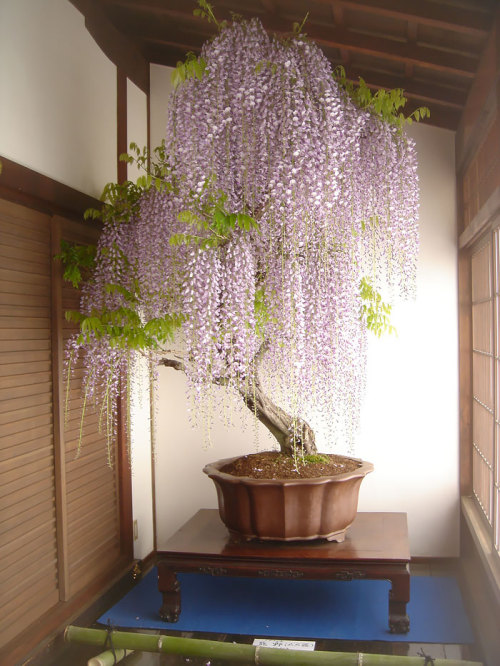
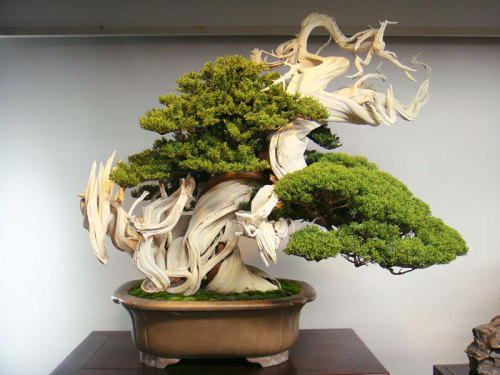
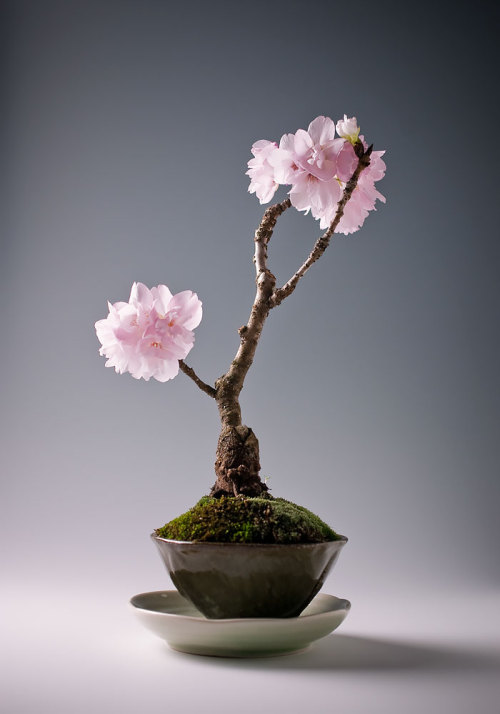
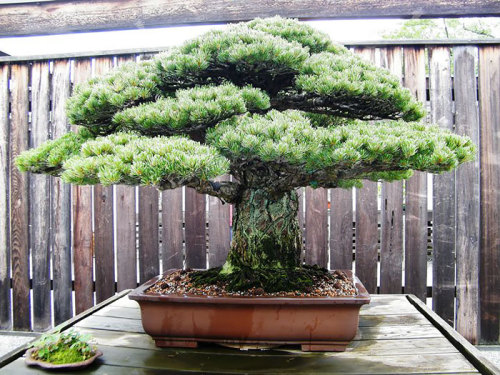

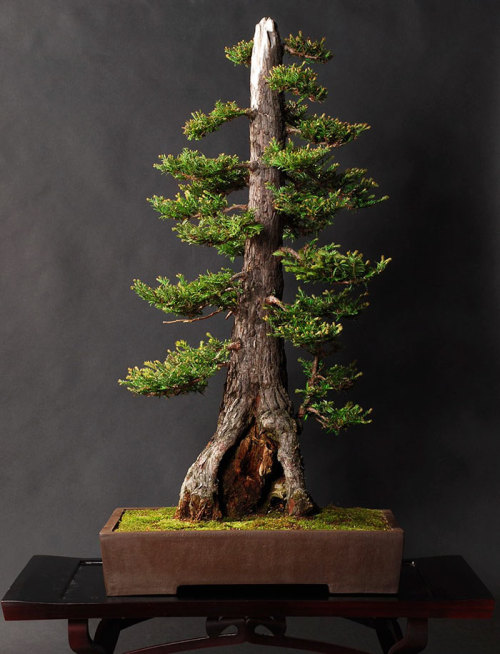

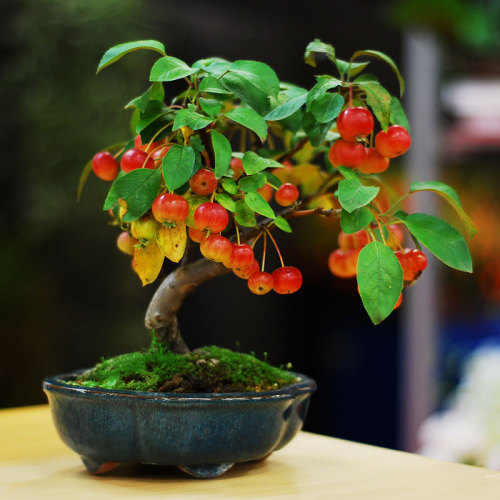


The Most Beautiful Bonsai Trees Ever.

Ines


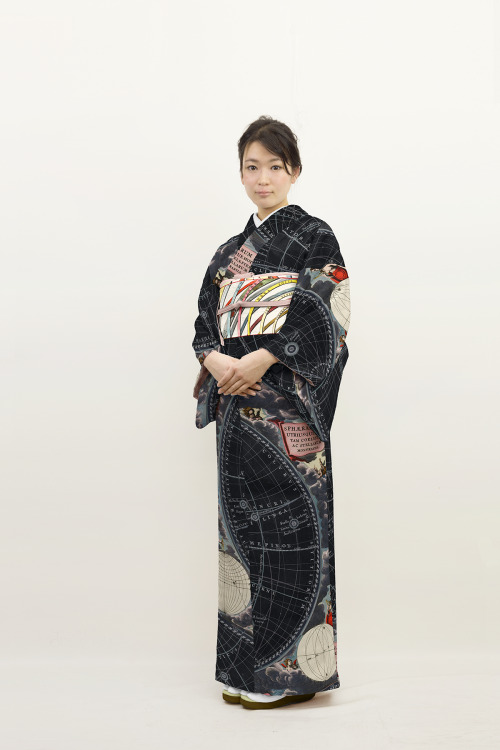

Constellation print and map kimonos
Cores e formas do Design japonês. Lindo.








Pages from 1901 and 1902 issues of Shin-Bijutsukai, a Japanese Design Magazine. See more here: http://publicdomainreview.org/collections/japanese-designs-1902/
Contrastes.










100 views of Tokyo, Shinji Tsuchimochi

Molecular body guards for neurons
In the brain, patterns of neural activity are perfectly balanced. The interplay between activating and inhibitory neurotransmitters ensures that the level of activity stays within the physiological range. During an epileptic attack excitation gains the upper hand resulting in the death of neurons. Researchers of the Bonn University Medical School have now discovered a key player in a signal transduction cascade, which protects neurons from hyperexcitation-induced cell death. These results open a new direction for the development of novel therapy options. The results are now published in “The Journal of Neuroscience“.
Pathophysiological activity often triggers neuronal cell death. This can for example be observed after an epileptic insult. The cause for this hyperexcitation is excessive release of the signaling molecule glutamate. “This neurotransmitter can switch on signaling cascades that act neurotoxic”, says Prof. Dr. Schoch McGovern of the Institute of Neuropathology and the Department of Epileptology at the University Clinic Bonn. However, neurons try to protect themselves and prevent the damaging hyperexcitation.
The molecular nature of these “body guards” is so far unresolved. Accumulating evidence shows transcription factors to play an essential role in the processes by which neurons protect themselves. These factors switch on certain genes, which then via signal transduction cascades result in the production of neuroprotective substances. These in turn counteract the damaging glutamate-induced hyperexcitability.
Increased neuronal cell death in the absence of Syt10
The team of Prof. Dr. Schoch McGovern could now show that the protein Synaptotagmin 10 (Syt10) is an integral part of this protective shield. If rats for example experience an epileptic seizure, the amount of Syt10 in the hippocampal formation of the brain strongly increases. The researchers used neurons from mice, in which the Syt10 gene had been ablated, and stimulated them with a glutamate like substance. This treatment resulted in substantial neuronal death.
NPAS4 modulates the production of protective factors
The research team discovered, which transcription factor activates the gene for Syt10 in response to pathophysiological neuronal activity. This essential member of the neuronal body guard is called NPAS4. The researchers cultured rodent neurons and added several transcription factors. NPAS4 activated the Syt10 gene and required Syt10 to exert its neuroprotective function. “NPAS4 triggers a signaling cascade that results in the production of neuroprotective factors”, says Prof. Dr. Schoch McGovern.
Search for novel therapy approaches
The molecular identity of the neuroprotective substances is still unknown. “A potential candidate, the insulin-like growth factor IGF-1, was not able to reverse the increased neuronal cell death in the absence of Syt10”, reports the neurobiologist. The next step therefore is to test other substances. Once the identity of the neuroprotective body guards is revealed, novel avenues for therapy development open up, for example for stroke and epilepsy patients. “The goal would be to administer these protective substances from the outside in order to prevent neuronal cell death in the brain”, says Prof. Dr. Albert Becker, a medical doctor, who was part of the study. However, there is still a long road ahead.
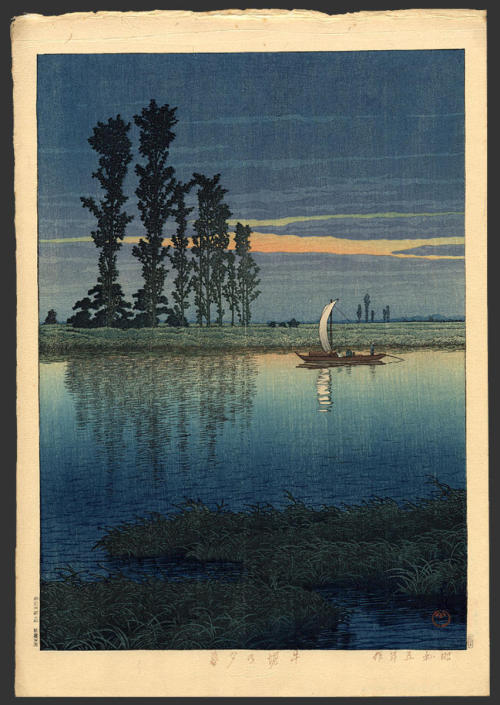
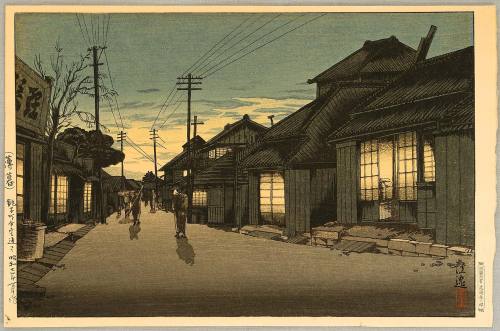



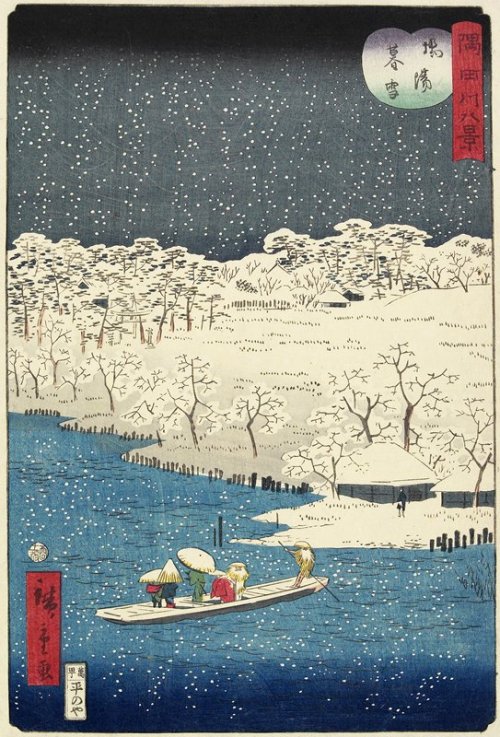
What is it about this twilight hour? Even the sound of a barely perceptible breeze pierces the heart. (Ono no Komachi, c. 825 – c. 900, Japanese poet of the early Heian period).
It’s no longer day but night hasn’t come yet either. One by one, the voices that fill the hours of the day with their incessant noise fade until the silence is almost complete. Some aspects of the colours stay concealed in daylight, but now comes the moment for them to appear. The evening light reduces every superfluous detail, every unnecessary shape; it is at the same time the absolute truth and the most beautiful lie.
Today let’s wander in evening landscapes (top to bottom, left to right): Evening at Ushibori, by Kawase Hasui, 1930 [source]; Evening Glow at Choshi, by Tsuchiya Koitsu, 1932 [source]; Dusk at Itako, by Kawase Hasui, 1932 [source]; Fishing Boats at Sea, by Ohara Koson, c. 1900 [source]; Evening at Minano in Chichibu, by Kawase Hasui, 1946 [source]; Evening Snow at Hashiba, by Utagawa Hiroshige II 1861 [source].
Solar System: Things to Know This Week
Discoveries in planetary science are often both weird and wonderful, and these newest announcements are no exception. This week we present a few of the most interesting recent scientific findings from our missions and NASA-funded planetary science. Take a look:
1. Seeing Spots

Scientists from our Dawn mission unveiled new images from the spacecraft’s lowest orbit at the dwarf planet Ceres, including highly anticipated views of the famous “bright spots” of Occator Crater. Take a look HERE.
2. Pluto’s Secrets Brought to Light

A year ago, Pluto was just a bright speck in the cameras of our approaching New Horizons spacecraft, not much different than its appearances in telescopes since Clyde Tombaugh discovered the dwarf planet in 1930. Now, New Horizons scientists have authored the first comprehensive set of papers describing results from last summer’s Pluto system flyby. Find out more HERE.
3. Rising Above the Rest

In a nod to extraterrestrial mountaineers of the future, scientists working on our Cassini mission have identified the highest point on Saturn’s largest moon, Titan. The tallest peak is 10,948 feet (3,337 meters) high and is found within a trio of mountainous ridges called the Mithrim Montes, named for the mountains in Tolkien’s Middle-Earth.
4. Does the “Man in the Moon” Have a New Face?

New NASA-funded research provides evidence that the spin axis of Earth’s moon shifted by about five degrees roughly three billion years ago. The evidence of this motion is recorded in the distribution of ancient lunar ice, evidence of delivery of water to the early solar system.
5. X-Ray Vision

Solar storms are triggering X-ray auroras on Jupiter that are about eight times brighter than normal over a large area of the planet and hundreds of times more energetic than Earth’s “northern lights,” according to a new study using data from our Chandra X-ray Observatory.
Want to learn more? Read our full list of things to know this week about the solar system HERE.
Make sure to follow us on Tumblr for your regular dose of space: http://nasa.tumblr.com

Photo by Ezin Tseng on Flickr
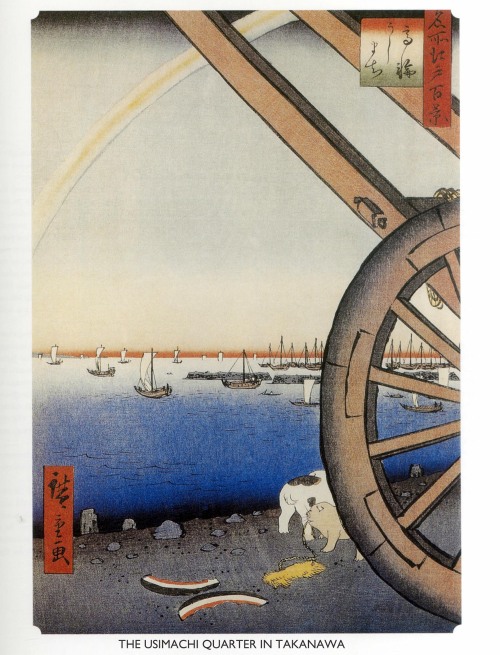
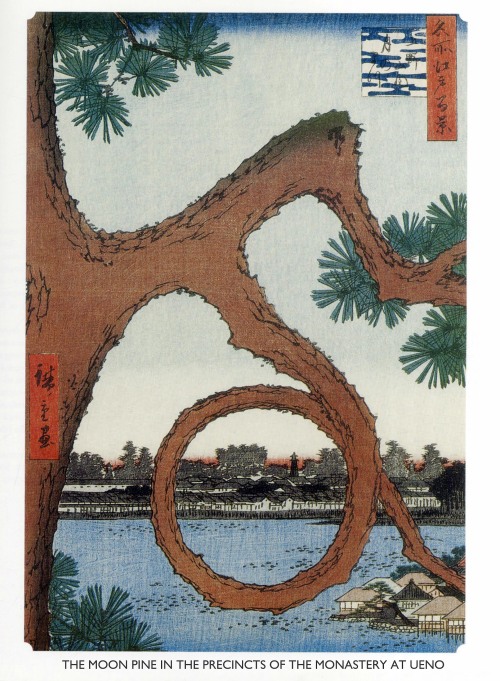
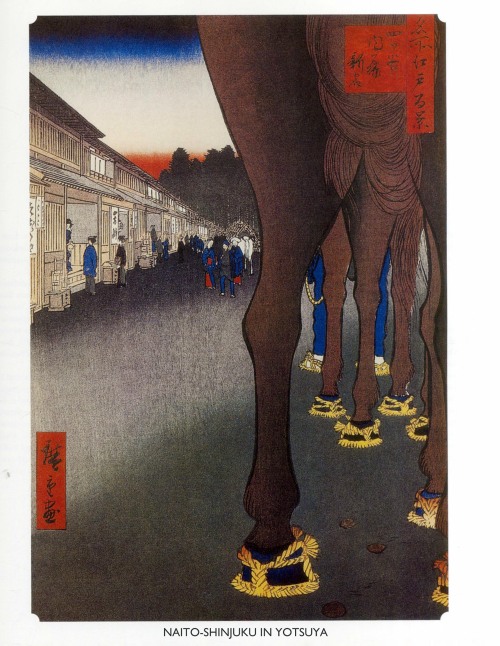
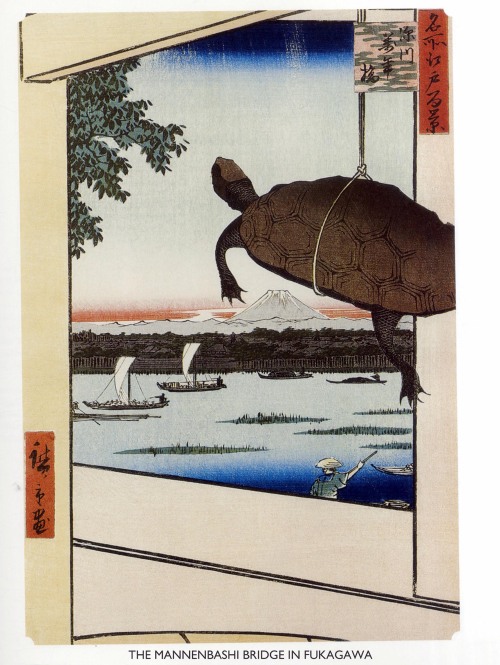
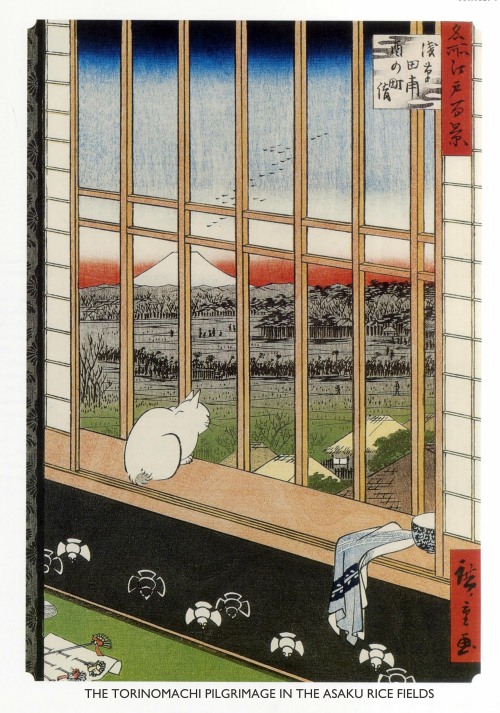
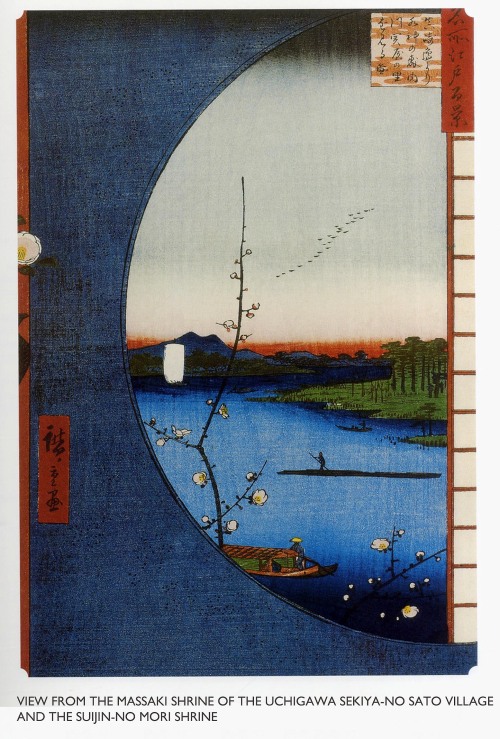
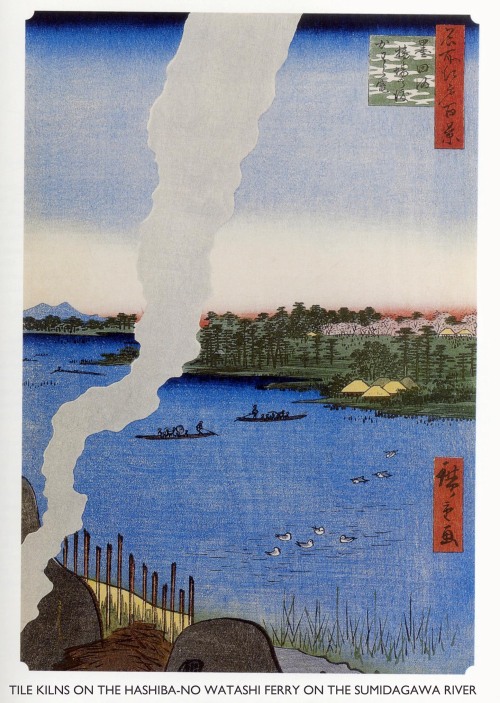
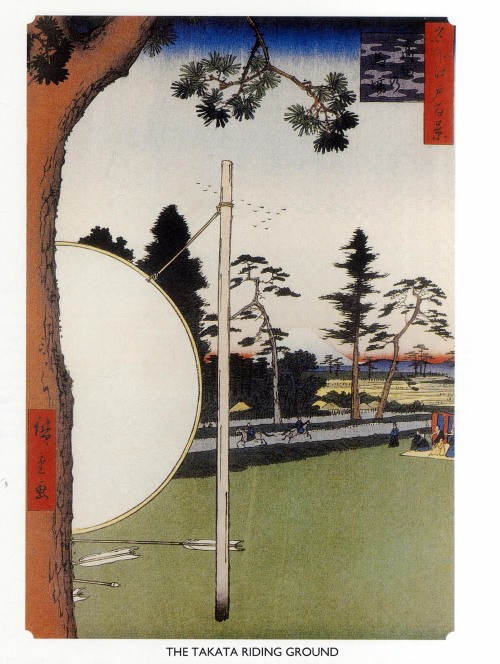
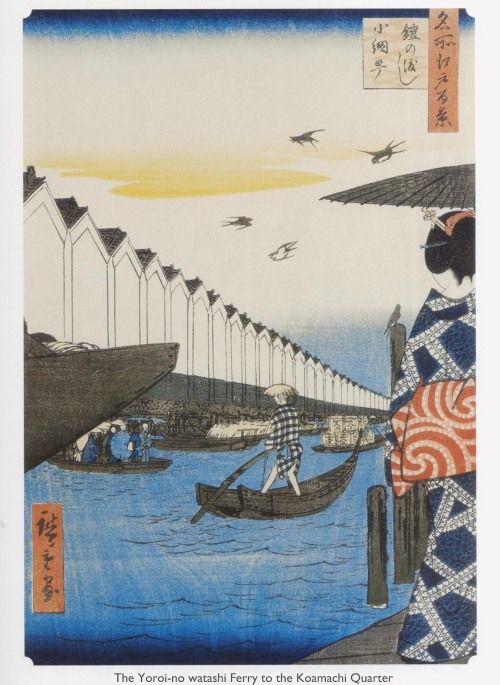
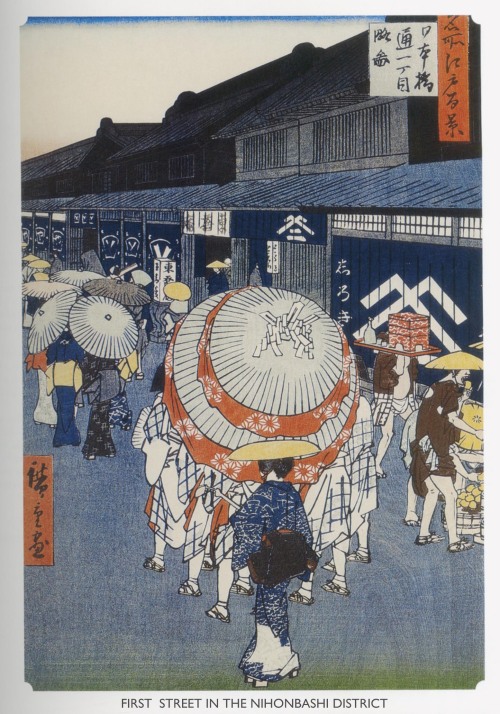
Hiroshige: from One Hundred Famous Views of Edo 1858-59 woodblock print

Primeira flor de Pêssego Ao vento frio de final de março Um desassossego Na alma O começo.
Onde as árvores falam.





清水寺ーSEISUIJI * 佐渡にあるお寺 誰もいなくて冷んやりしてて でもすごく懐かしい場所だった